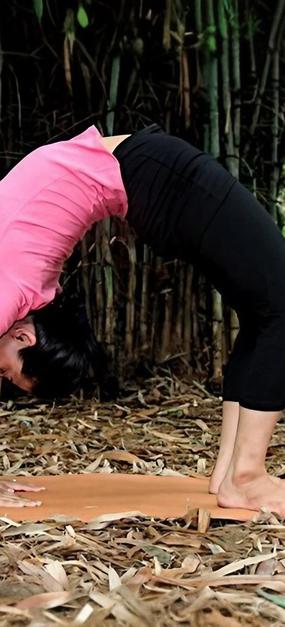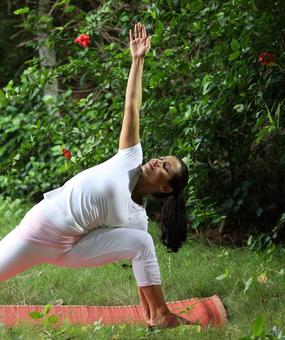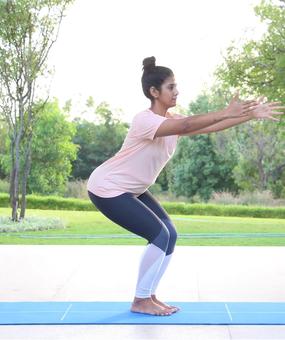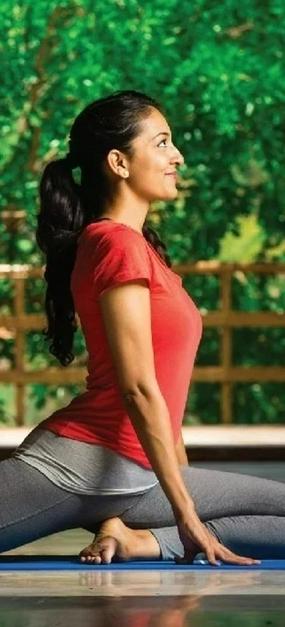What is Vajrasana?
This asana is pronounced as vuh-drah-sa-na.
‘Vajra’ means diamond-shaped or thunderbolt; ‘asana’ means posture or pose. Vajrasana has been named after the shape it takes – a diamond or thunderbolt. If there is one holistic pose that you can slip into easily, and still gain a variety of benefits, it is the Vajrasana, the Adamantine Pose. The vajra-asana is a versatile posture well suited for meditation, rest in between other seated postures, or as an aid to digestion. The vajra-asana is the position in various other yoga postures such as the anjaneya-asana (salutation posture) and the ushtra-asana (the camel).
How to do Vajrasana
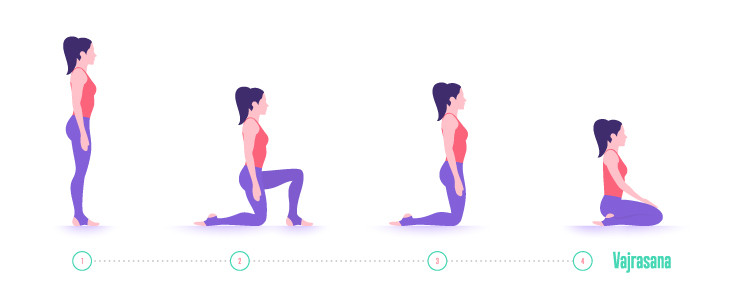
- The vajra-asana is a seated posture. Begin by sitting back on your heels and placing your knees, legs and feet together.
- Keeping the back straight place the palms of your hands down on top of your thighs.
- Breath gently through your nostrils and sit in this position for at least three minutes.
Duration/Repetitions:
The vajra-asana can be held for as long as is comfortable(and depending on the reason for doing the posture).
Benefits of Vajrasana
- Vajrasana boosts blood flow in the lower abdomen, aiding digestion.
- Alleviates stomach discomfort by reducing gas and pain.
- It Fortifies leg and thigh nerves.
- Promotes flexibility in knee and ankle joints, warding off specific rheumatic conditions.
- Maintains proper alignment of the neck and spine, facilitating energy flow in the back’s channels.
- Eases tension in the waist and hips, offering menstrual pain relief.
- Serves as a foundational posture for pranayamas and prepares for meditation.
- Vajrasana Assists in alleviating back pain.
Precautions
Some physical conditions put restrictions on us. In the following cases, people should consult their doctors before doing Vajrasana.
- Those who have acute trouble or stiffness in foot, ankle, and knees.
- Those with a slipped disc.
- Those who have difficulty in the movement of limbs must take great care.
Unique elements of Vajrasana
- This is the only yoga asana you can do after eating. If you sit in Vajrasana after your meals, food gets digested well.
- This asana reduces the flow of blood to the lower regions, increasing circulation to the upper parts – the digestive system, lungs, and brain.
- The special aspect of this pose is that it is the base pose – many other asanas like Gomukhasana, Ustrasana, and Shishuasana begin. One can also sit in Vajrasana while doing pranayamas. And yet, it is beneficial to simply sit in this posture as well!
Modifications and variations
To modify: If sitting directly on your heels is too difficult, place a pillow or cushion in between your thighs and heels. Release the legs early if the pose cuts off blood flow to the lower extremities.
To increase the challenge: Flex your toes when sitting on your heels in this yoga posture. Doing so creates a deep toe stretch.
Preparatory and follow up poses
- Sukhasana (Preparatory)
- Pawanmuktasana (Preparatory)
- Shishuasana (Preparatory)
- Paschimottanasana (Follow up)
- Baddhakonasana (Follow Up)
View All – Sitting yoga asanas that can energize & relax
All Yoga Poses Previous yoga pose: Chakki Chalanasana Next yoga pose: Gomukhasana


